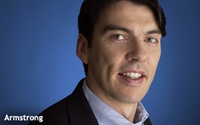 Adland has some work to do before AOL CEO Tim Armstrong considers it truly fit for the current and ever-changing media landscape.
Adland has some work to do before AOL CEO Tim Armstrong considers it truly fit for the current and ever-changing media landscape.
In a Tuesday session at the 4As Transformation
conference, Armstrong was asked by Horizon Media CEO Bill Koenigsberg to grade agencies in terms of their readiness to work with AOL across its array of current platforms.
Armstrong
replied that Adland is talking a good game and gets an A- for that. For execution, however, he said that the average agency grade was a B-. Clients clearly want better, he said.
From
a technology standpoint, said Armstrong, agencies must be up to date with a capability to “plug in” to AOL’s platforms on several levels, including sales, products, content and
engineering. And there must be more sharing of two-way data. “Some agencies are and some aren’t,” he said.
advertisement
advertisement
Laggards, Armstrong added, are probably those shops that
say, among other things, “everything has to run off my technology on the trading side.”
And while clients might not want to work with a “B-” agency, they
often don’t have the headcount to work directly with AOL. Thus, they end up with parts of their activation strategies “falling through the gap.”
On the creative
side, Armstrong recalled how over the past weekend he saw a number of Buick ads during the NCAA Men’s Basketball Tournament. In his view, the ads were effective and changed his view of Buick for
the better. But with the message received, he added, the carmaker is “wasting money” by showing the same ads repeatedly throughout the tournament.
The takeaway, he said,
is that in the future, brands and agencies will need to make exponentially more and different ads that make different points in order to maximize spending ROI.
AOL has invested heavily in
programmatic buying, and Armstrong says he believes all TV networks will eventually be in the programmatic business to some degree. There will be some thinning of the network ranks, he added. Those
that refuse to engage in programmatic buying probably won't survive.